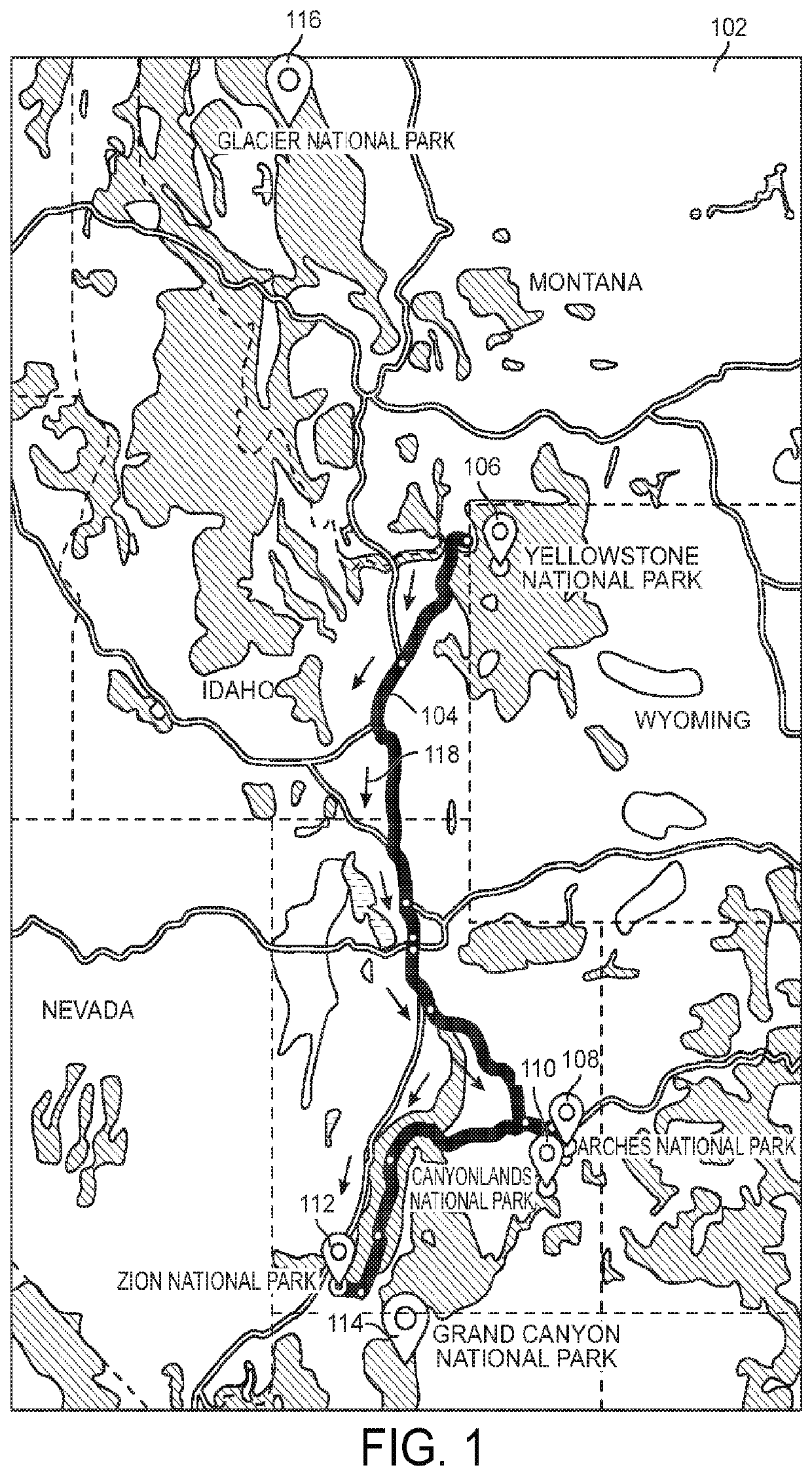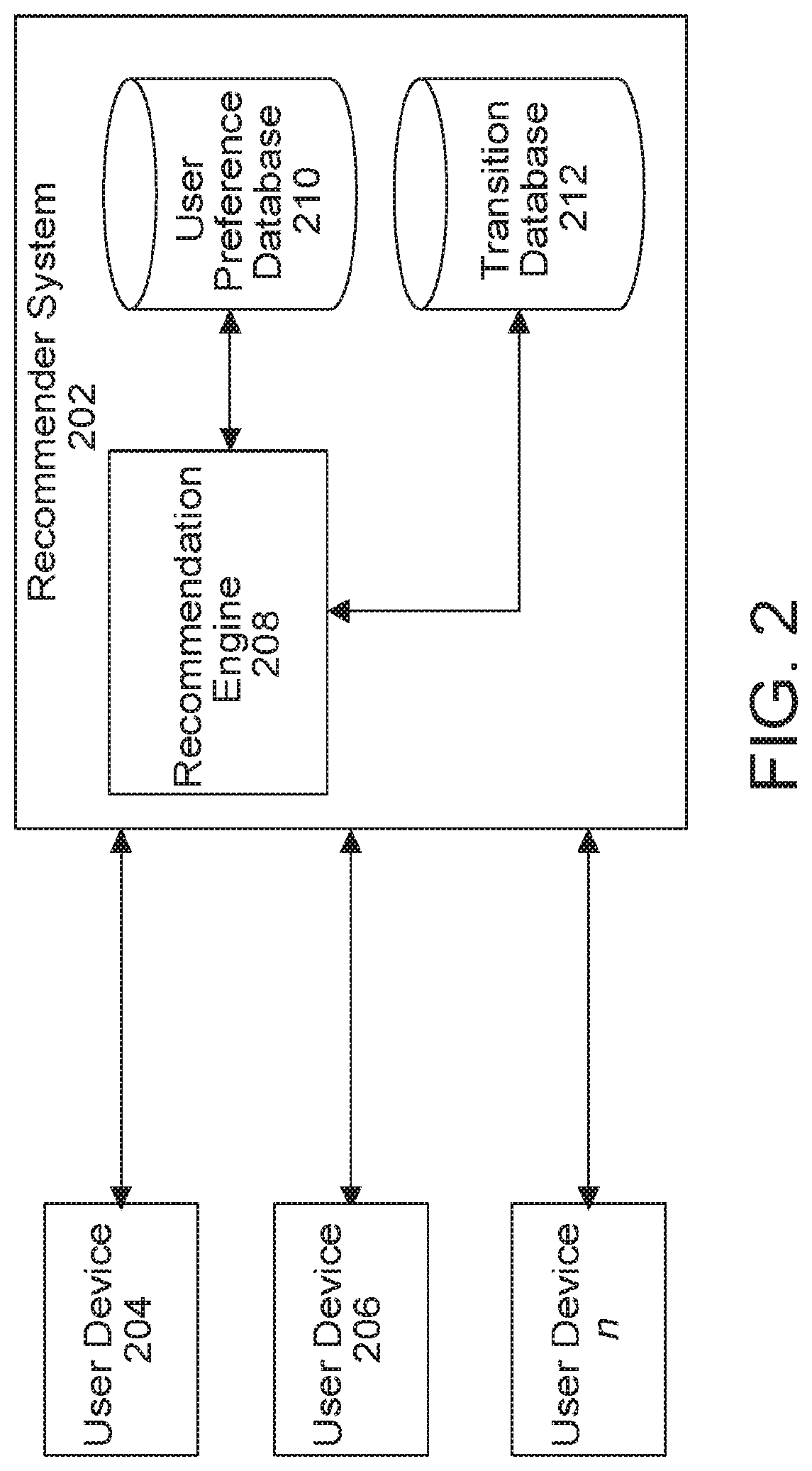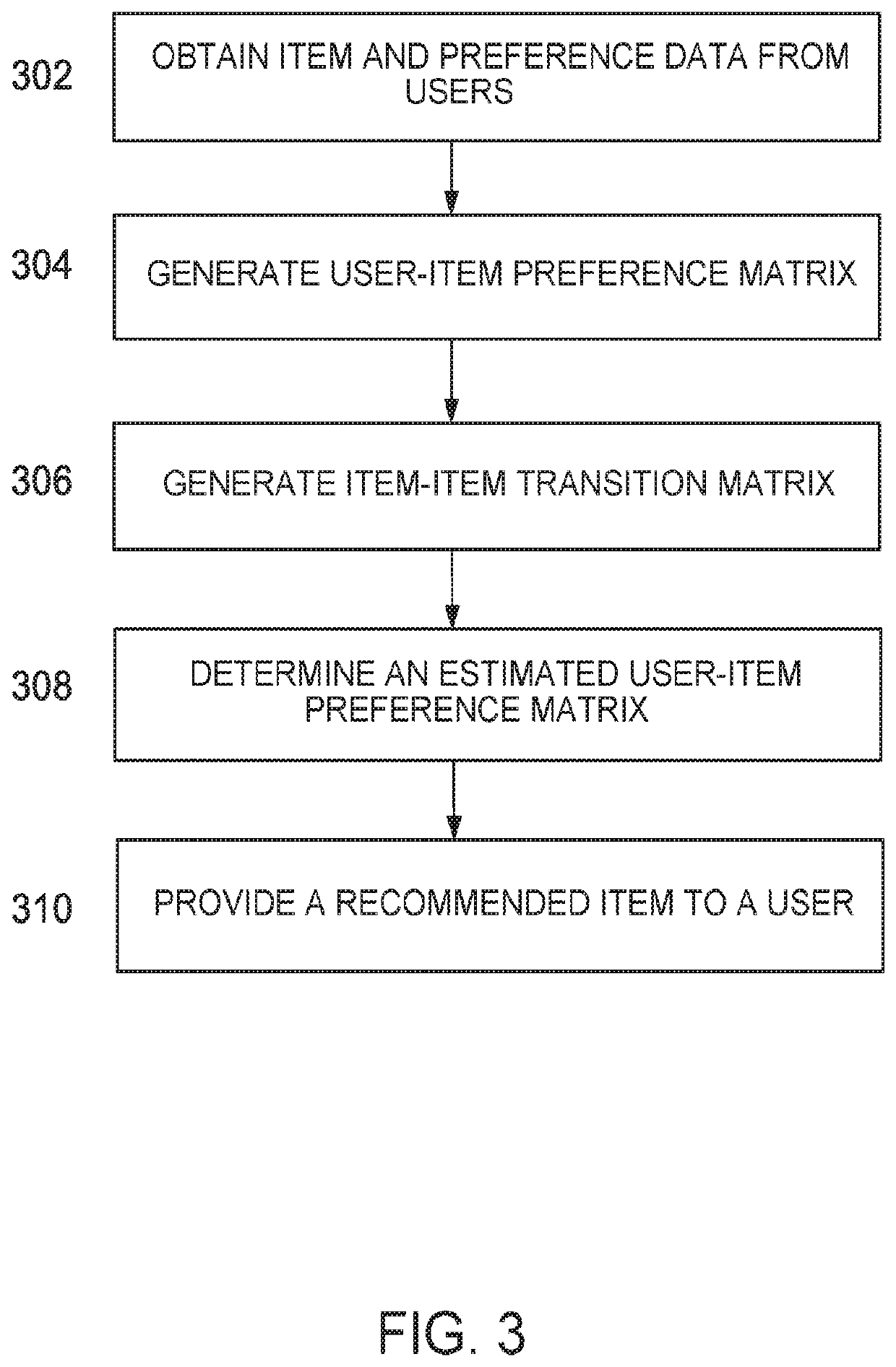Transition regularized matrix factorization for sequential recommendation
a matrix factorization and sequential recommendation technology, applied in the field of transition regularized matrix factorization for sequential recommendation, can solve the problems of ineffective predictive models learning from available data, existing sequential recommendation methods, and all components are combined independently, and achieve more robust and accurate solutions.
- Summary
- Abstract
- Description
- Claims
- Application Information
AI Technical Summary
Benefits of technology
Problems solved by technology
Method used
Image
Examples
use example
C. Use Example
[0041]FIG. 1 depicts a user travel path and some available recommendation choices for next locations to visit according to one example. The example depicted is being used to describe a situation in which a user interacts with a sequence of items (e.g., visits or rates tourist locations), has last interacted with a most recent item, and is seeking a recommendation of a next item (e.g., next logical tourist location) that the user has not yet interacted with.
[0042]The user recommendation scenario in FIG. 1 depicts a plan view 102 of a geological map including a user path 104. The user path 104 can include visited locations 106, 108, 110, and 112. The plan view 102 can also include possible recommended locations 114 and 116. In this example, a user can take a National Parks road-trip along user path 104 and visit Yellowstone National Park (106), Arches National Park (108), Canyonlands National Park (110), and Zion National Park (112) in a sequence. The user can travel alo...
PUM
 Login to View More
Login to View More Abstract
Description
Claims
Application Information
 Login to View More
Login to View More - R&D
- Intellectual Property
- Life Sciences
- Materials
- Tech Scout
- Unparalleled Data Quality
- Higher Quality Content
- 60% Fewer Hallucinations
Browse by: Latest US Patents, China's latest patents, Technical Efficacy Thesaurus, Application Domain, Technology Topic, Popular Technical Reports.
© 2025 PatSnap. All rights reserved.Legal|Privacy policy|Modern Slavery Act Transparency Statement|Sitemap|About US| Contact US: help@patsnap.com



